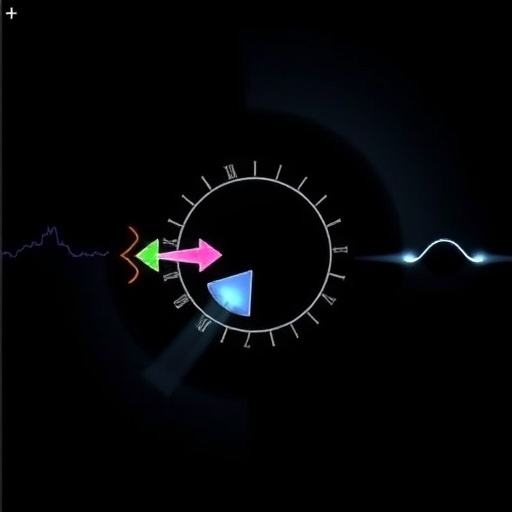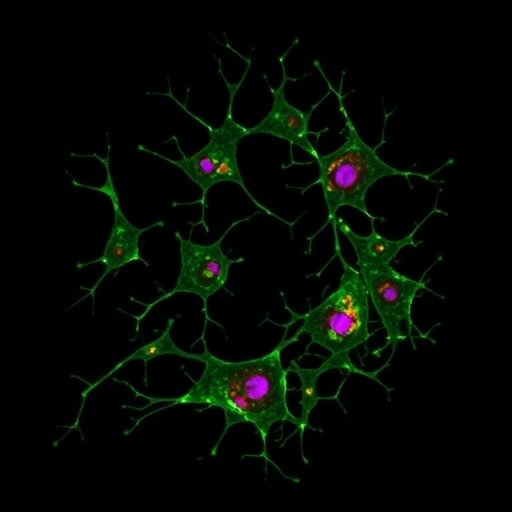In a pioneering stride within pediatric respiratory diagnostics, researchers have introduced an innovative indigenous method employing high-speed video microscopy to diagnose primary ciliary dyskinesia (PCD) in children. This breakthrough promises to revolutionize early detection and understanding of PCD, a rare genetic disorder that significantly impairs respiratory function due to defective ciliary motion. The novel approach leverages advanced imaging techniques integrated seamlessly with localized healthcare expertise, offering a cost-effective and accessible diagnostic alternative in clinical settings worldwide.
Primary ciliary dyskinesia affects the microscopic, hair-like structures known as cilia lining the respiratory tract, which play an essential role in clearing mucus and pathogens. Traditionally, definitive diagnosis has relied on a combination of clinical suspicion, genetic testing, and expensive imaging techniques that are not ubiquitously available, especially in resource-limited areas. The introduction of a high-speed video microscopy method adapted from indigenous technology reshapes this paradigm, providing detailed visualization of ciliary motion at an unprecedented frame rate that captures dynamic beat patterns essential for accurate diagnosis.
.adsslot_7eUIOM3Nk6{ width:728px !important; height:90px !important; }
@media (max-width:1199px) { .adsslot_7eUIOM3Nk6{ width:468px !important; height:60px !important; } }
@media (max-width:767px) { .adsslot_7eUIOM3Nk6{ width:320px !important; height:50px !important; } }
ADVERTISEMENT
The development team capitalized on local technological resources, combining cost-effective optics and imaging modules with bespoke software tailored to analyze ciliary movement patterns rapidly. This synergy optimizes device portability and user-friendliness without compromising precision. Importantly, the method encapsulates a streamlined sample collection process involving nasal epithelial brushings, which when combined with real-time high-speed microscopy, reduces the diagnostic turnaround from weeks to mere hours, a significant clinical advantage.
Clinically, early and reliable diagnosis of PCD is vital; untreated or delayed identification often leads to chronic respiratory infections, bronchiectasis, and progressive lung damage. The sensitivity of the indigenous high-speed video microscopy method ensures that subtle abnormalities in ciliary motility, which might elude conventional diagnostic approaches, are detected swiftly. Pediatric pulmonologists stand to benefit immensely from a tool that augments their diagnostic arsenal, enabling prompt initiation of tailored therapeutic interventions.
This novel diagnostic platform also stands out for its adaptability. Unlike conventional high-cost systems, it can be deployed in peripheral healthcare centers, particularly in developing regions where PCD incidence may be underreported due to lack of specialized diagnostic services. This democratization of advanced diagnostics not only aids in timely treatment but could also enhance epidemiological understanding of PCD across diverse populations, fostering improved disease management strategies.
Technically, the method involves capturing nasal epithelial samples, placing them under a specially designed microscope equipped with high-speed cameras capable of recording at frame rates exceeding 500 fps. Subsequent image processing employs advanced algorithms to generate kymographs and other analytical outputs that encapsulate the complex spatial and temporal features of ciliary motion. These quantitative metrics provide objective criteria, mitigating the subjective variability associated with conventional microscopic assessments.
Beyond accuracy, the workflow efficiency attained through the indigenous technique marks a paradigm shift. Traditional methods necessitate sophisticated infrastructure and highly trained personnel, limiting accessibility. In contrast, the streamlined high-speed video microscopy setup reduces dependency on external laboratories and specialized technicians, paving the way for broader implementation and rapid scaling within pediatric diagnostic networks.
From a technological standpoint, several hardware modifications underpin the method’s success. Customized microscope optics optimize illumination and focus specifically for the thin epithelial samples, enhancing image clarity and contrast. The high-speed camera used features enhanced sensor sensitivity and fast data transfer rates, ensuring high-fidelity recordings. Accompanying software interfaces facilitate real-time visualization, automated analysis, and archival, thus improving clinician experience and diagnostic consistency.
The potential implications extend beyond PCD diagnosis. The platform’s modular design allows adaptation for investigating other motile cilia-related disorders or even sperm motility abnormalities, broadening its clinical utility. Furthermore, the indigenous nature of this development underscores the capacity of local innovation to address global health challenges by providing affordable, effective solutions tailored to regional needs.
The researchers emphasize that widespread adoption relies on interdisciplinary collaboration, encompassing engineers, clinicians, and healthcare policymakers. Training modules and standardized protocols are crucial to ensure accurate sample handling and data interpretation. Efforts to integrate this diagnostic tool into routine pediatric care pathways are underway, with pilot programs assessing its impact on clinical outcomes and healthcare economics.
In summary, the advent of an indigenous high-speed video microscopy method marks a pivotal advancement in the diagnosis of primary ciliary dyskinesia in children. This innovation marries technological ingenuity with clinical necessity, transforming the landscape of pediatric respiratory diagnostics. Through enhanced accessibility, accelerated turnaround times, and improved diagnostic precision, this technique offers hope for better management of a debilitating yet underdiagnosed condition, potentially improving quality of life for countless affected children globally.
The seamless melding of high-resolution imaging with user-centered design principles positions this methodology as a blueprint for future diagnostic innovations in pediatric respiratory medicine. As the global health community seeks solutions tailored to diverse socioeconomic contexts, indigenous technologies such as this underscore the power of bridging cutting-edge science with localized ingenuity.
Looking ahead, ongoing research aims to refine image processing algorithms using artificial intelligence to further enhance diagnostic accuracy and automate interpretation. Additionally, longitudinal studies are planned to evaluate the prognostic value of early diagnosis facilitated by this method, correlating ciliary motility patterns with clinical progression and therapeutic response in PCD patients.
With publication in the World Journal of Pediatrics and growing interest from the medical community, this indigenous high-speed video microscopy system is poised to become a new standard of care. Its viral potential lies not only in technological sophistication but also in its empowering approach, enabling clinicians worldwide to detect and address primary ciliary dyskinesia with unprecedented efficacy.
Subject of Research: Diagnosis of primary ciliary dyskinesia in children using high-speed video microscopy.
Article Title: An indigenous method of high-speed video microscopy for diagnosis of primary ciliary dyskinesia in children.
Article References:
Tayal, A., Jat, K.R., Faruq, M. et al. An indigenous method of high-speed video microscopy for diagnosis of primary ciliary dyskinesia in children. World J Pediatr 21, 613–618 (2025). https://doi.org/10.1007/s12519-025-00931-5
Image Credits: AI Generated
DOI: June 2025
Tags: advanced imaging techniques in medicinecilia function and respiratory diseaseciliary motion in respiratory healthcost-effective medical imaging techniquesdynamic visualization of ciliary movementearly detection of genetic disordersindigenous high-speed video microscopyinnovative diagnostic methods for childrenlocalized healthcare expertise in diagnosticspediatric respiratory diagnosticsprimary ciliary dyskinesia diagnosisresource-limited healthcare solutions





